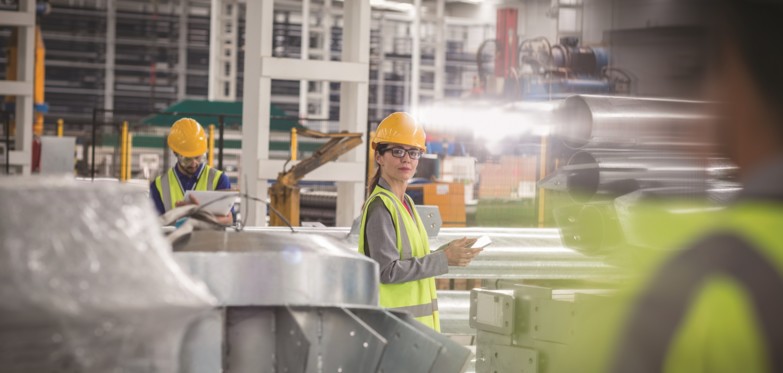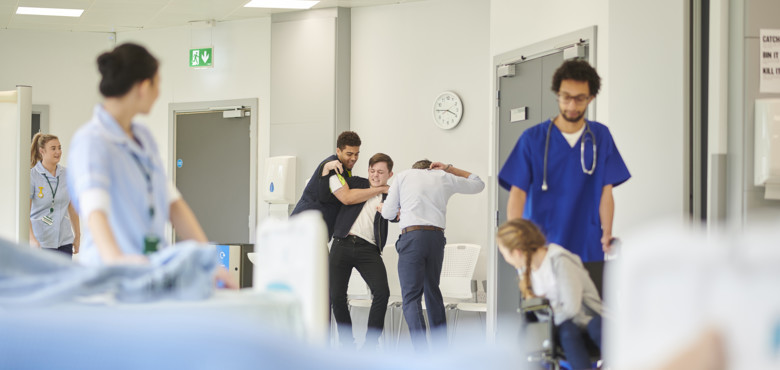Video analytics that improve workplace safety and health
A concerning rise in workplace fatalities in Asia this year has prompted the Singapore government to introduce comprehensive new workplace safety and health (WSH) measures. These measures promote heightened worker safety programs, increase personal accountability for company executives, and identify technology as a key enabler for achieving better WSH outcomes. In this post we examine the underlying reasons for this trend, detail the new WSH measures, and discuss how video surveillance technology – specifically the use of video analytics – can enhance worker safety, mitigate corporate risk, and keep businesses operational.
A proactive approach to a global challenge
Occupational accidents are a global challenge. In fact, the UN estimates that 2.78 million workers die from occupational accidents and work-related diseases while an additional 374 million workers suffer from non-fatal occupational accidents annually. However, this is not geographically proportionate, with 65% of global work-related mortality estimated to occur in Asia alone.
As the economy re-opens and industries do their best to recover from pandemic related corporate losses, worker safety is a top priority for both governments and enterprises alike. In Singapore, the government has taken a serious view on a spate of recent workplace accidents, and found that a number of these incidents could have been prevented had standard health and safety practices been followed – such as wearing seatbelts when driving forklifts or fall protection equipment when working from heights. This has further prompted the government to take decisive action and implement strict new workplace safety and health (WSH) measures.
Measures that enhance worker safety and hold executives accountable
The new government “heightened safety” measures are a six month, multi-agency, multi-prong approach to workplace safety that include:
- A two week “safety time-out” period for senior management, workers, and union representatives to review and reinforce WSH processes
- WSH guidance for company executives
- Strengthened support for SMEs to improve WSH practices
- Ramped up inspections and heavier penalties for companies with consistently poor WSH practices
- Technology recommendations to improve WSH outcomes
“Always on” intelligent video solutions keep a watchful eye on worker safety
It’s a high stakes game when lives, livelihoods and corporate profits are on the line. And both workers and corporate executives play a vital role in ensuring workplace safety. For their part, leaders need to create safe working environments and ensure proper safety supervision, while workers need to understand and practice safe working procedures.
Although not specifically highlighted in the recent WSH technology recommendations, the Singapore government has already embraced the use of technology to automate security functions through its industrial transformation program. A well-established technology that many companies are already using to achieve their security goals is video.
With the advancement of deep-learning analytics, the same video surveillance cameras that companies use to detect loitering and intrusion can also alert to workers entering restricted or high-risk areas. Camera analytics can also deliver helmet, safety harness, and other personal protective equipment (PPE) detection, as well as man-down alarms for improving lone worker safety. And it’s not limited to people. Video analytics can also detect the presence of unauthorized vehicles using license plate recognition, as well as dangerous driving behavior such as speeding or wrong-way driving. They can even alert to objects blocking exit doors or evacuation routes.
The benefits of video-based automated safety alerts are that they are “always on”, deliver increased accuracy and precision, and are a more cost-effective solution than traditional manpower resources.
Video analytics deliver value beyond incident management
In addition to minimizing workplace accidents, camera analytics are a valuable data source that company executives can use to analyze WSH incidents. Data that can help them identify common worker safety hazards, high-risk areas, non-compliance trends, seasonal or time of day correlations, and more. It’s data that delivers actionable insights that business leaders can use to further improve their worker safety protocols.
High quality video surveillance recordings of WSH incidents are also invaluable training tools that worker safety managers can use to review safety protocols with their teams. Because learning from past experiences can often help prevent future occurrences.
Integrated technology safeguards workers in any industry and keeps businesses running
For obvious reasons, workplace fatalities garner more attention, but represent only a small fraction of worker safety incidents. Any workplace injury that leads to time away from work can negatively impact productivity, disrupt normal business operations, or put additional strain on limited resources. It can pause urban infrastructure or commercial real estate development, disrupt public utility services, lead to costly lawsuits for retailers, or even impact the quality of care in healthcare networks.
Workers are the backbone of any industry. And with the help of smart technologies like cameras, video analytics, integrated audio, access control, wearable devices and more, business leaders can help keep their most precious assets safe and secure.
Click here to learn more about Axis technology for a safer workplace in your industry.


